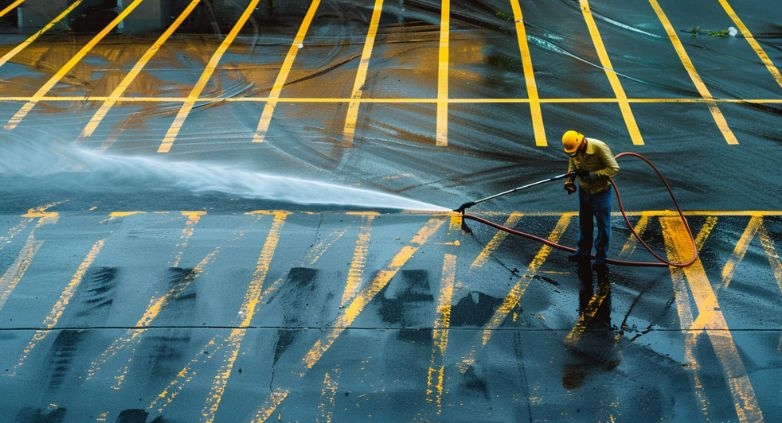Parking Lot Cleaning – 8 Steps to Spotless Splendor
Keeping a parking lot clean is crucial for making a positive first impression and ensuring safety. It’s about more than just aesthetics; it’s about maintenance and care.
Effective parking lot cleaning involves removing debris, treating stains, and regular maintenance to prevent damage. Regular sweeping, prompt repair of cracks and potholes, and sealcoating are key to extending the life of the parking area. Additionally, proper drainage systems prevent water accumulation, protecting the surface from water damage and erosion. These steps not only enhance appearance but also ensure the longevity and safety of the parking lot.
For detailed strategies and the best tools for maintaining a pristine parking lot, dive deeper into our comprehensive guide.
Tools and Equipment for Effective Parking Lot Cleaning
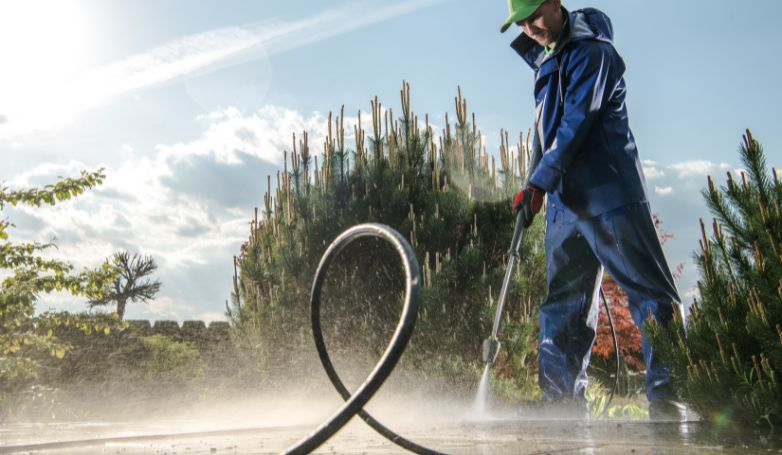
Maintaining a clean and well-presented parking lot plays a crucial role in safety and longevity of the surface. The right tools and equipment can make this task more efficient and effective, ensuring that your parking area remains in top condition.
Here’s a look at some essential tools for the job:
- Industrial Sweepers
- Powerful Blower
- Asphalt Broom
- Pressure Washer
- Degreaser/Cleaner
- Wire Brush
- Crack Filling Equipment
- Sealcoating Sprayer
Now that you have the tools, let’s see how to clean the parking lot effectively and maintain its pristine condition.
How to clean the parking lot in 8 steps
Follow these steps to ensure thorough cleaning and upkeep.
1. Get rid of unwanted vegetation
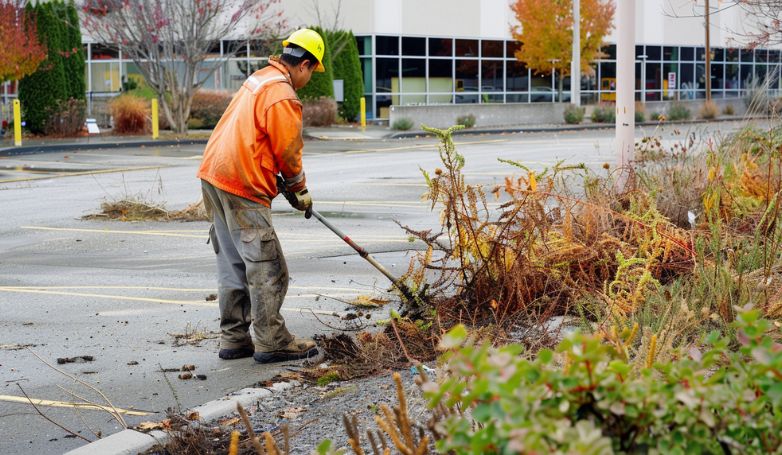
Begin by identifying and removing all forms of vegetation encroaching on the parking lot, such as weeds growing through cracks. This step is vital for preventing further damage to the asphalt or concrete surfaces. Use a combination of manual pulling and environmentally safe herbicides to eliminate these plants effectively. Ensuring the removal of roots will decrease the likelihood of regrowth, maintaining the integrity of the parking lot’s surface.
2. Clear loose debris
Utilize industrial sweepers and powerful blowers to remove all forms of loose debris, including leaves, trash, and dirt. This not only improves the parking lot’s appearance but also prevents the accumulation of materials that could obstruct drainage systems. Keeping the lot free from debris reduces the risk of slip hazards and potential damage to vehicles, creating a safer environment for pedestrians and drivers alike.
3. Clean cracks and potholes before filling
Before proceeding with repairs, thoroughly clean out cracks and potholes. This can be achieved by using a wire brush or specialized tools to remove all debris, ensuring that repair materials adhere properly. Cleaning these areas prevents water infiltration and further degradation. For deeper potholes, consider using a blower to expel all dust and particles, creating a clean base for the filling material.
4. Power wash
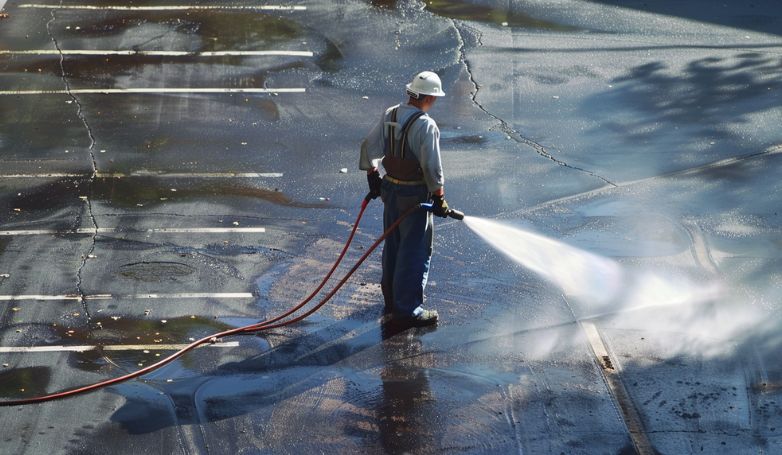
Employ a pressure washer to deeply cleanse the parking lot surface, removing tough stains, oil spills, and embedded dirt. This step is crucial for restoring the appearance of the parking lot and preparing it for further maintenance tasks. Choose the appropriate pressure setting to avoid damage to the pavement while ensuring a thorough clean. This process also helps to reveal any unnoticed damage that requires attention.
5. Remove stains
Address specific stains such as oil, grease, and tire marks using targeted cleaners or degreasers. Apply these products according to the manufacturer’s instructions, allowing them to sit for the recommended time before scrubbing with a stiff brush. This focused approach ensures the effective removal of stubborn stains, enhancing the overall cleanliness and appearance of the parking lot.
6. Fill cracks
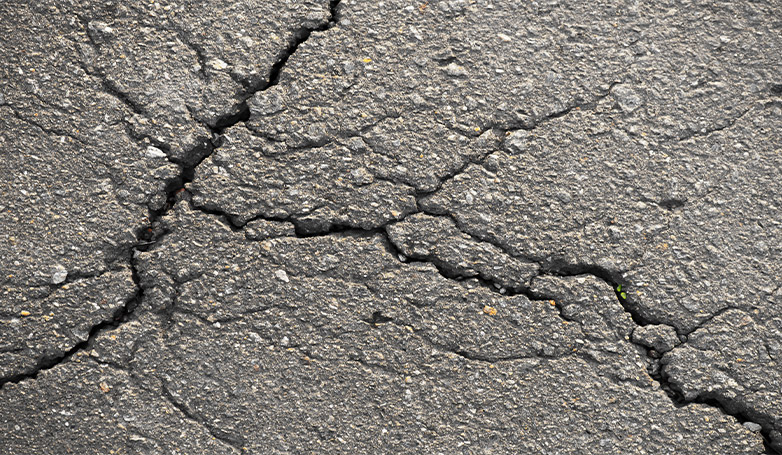
After cleaning, fill cracks with a suitable crack filler. Select a product designed for the type of pavement in your lot, ensuring it can accommodate the climate and traffic levels. Properly filling cracks prevents water penetration that can lead to freeze-thaw damage and further deterioration. Smooth the filler with a squeegee or trowel for a seamless finish, ensuring the longevity of the repair.
7. Sealcoat, as needed
Apply a sealcoat to the entire parking lot surface to protect it from weather, oil, and UV damage. This preventive maintenance step not only extends the life of the parking lot but also enhances its appearance with a fresh, uniform look. Follow the sealant manufacturer’s guidelines for application and drying times to achieve the best results.
8. Restriping the lot
The final step is to restripe parking lines, handicapped spaces, and crosswalks to ensure clear visibility and compliance with local regulations. Use high-quality, weather-resistant paint and professional striping equipment for crisp, durable lines. Restriping not only improves the functionality and safety of the parking lot but also contributes to its aesthetic appeal.
Cost Considerations for Parking Lot Cleaning

For parking lot cleaning, both DIY and professional services have their costs, which can vary based on several factors such as the size of the parking lot, its current condition, and the frequency of cleaning required.
DIY
The costs for DIY parking lot cleaning can include equipment rental or purchase, such as pressure washers, industrial sweepers, asphalt brooms, powerful blowers, wire brushes, and degreasers/cleaners. While specific prices for these items can vary widely based on quality and where you buy or rent them, the primary cost-saving comes from avoiding labor costs. However, consider the time investment and potential for less professional results.
Professional
The cost for professional parking lot sweeping services varies across the country but offers a guideline for budgeting. For example, sweeping a 500-space parking lot averages about $83.21 per service, but this can increase or decrease based on the parking lot size and other factors. Additional services like resealing asphalt can range from $0.14 to $0.25 per square foot, with the lot needing resealing every 2-4 years and resurfacing approximately every 20-25 years. For concrete lots, resealing is necessary every 3 years, with costs ranging from $0.10 to $0.30 per square foot, and resurfacing needed every 15-25 years at $3 to $10 per square foot.
When deciding between DIY and professional cleaning, consider not only the upfront costs but also the long-term maintenance and care of your parking lot to ensure safety and longevity.
Maintenance Tips to Keep Your Parking Lot Clean Longer
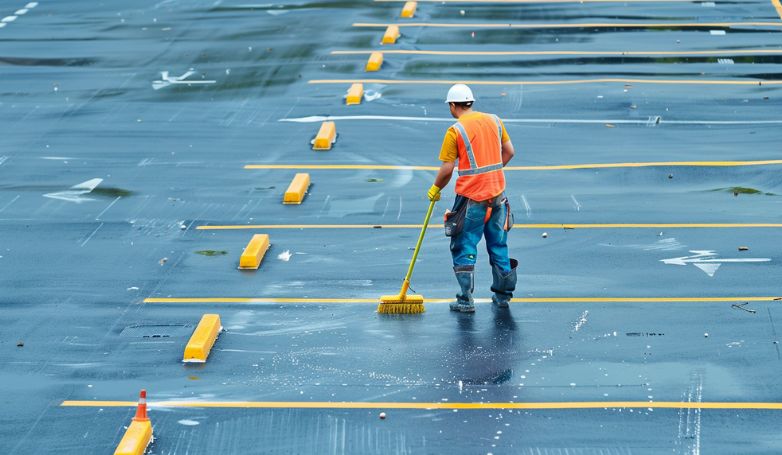
To ensure your parking lot remains in top condition, extending its usability and enhancing curb appeal, adhere to these essential maintenance tips:
Regular sweeping
Implementing a routine sweeping schedule is crucial for removing debris, leaves, and trash. This not only maintains the aesthetic appeal of your parking lot but also prevents the accumulation of materials that could damage the asphalt or concrete surface, thereby extending its lifespan and reducing the need for frequent repairs.
Prompt crack and pothole repair
Addressing cracks and potholes as soon as they are noticed prevents minor issues from escalating into major repairs. Timely maintenance ensures the structural integrity of the parking lot, enhances safety for users, and prevents water from penetrating the surface, which can cause further damage.
Stain removal
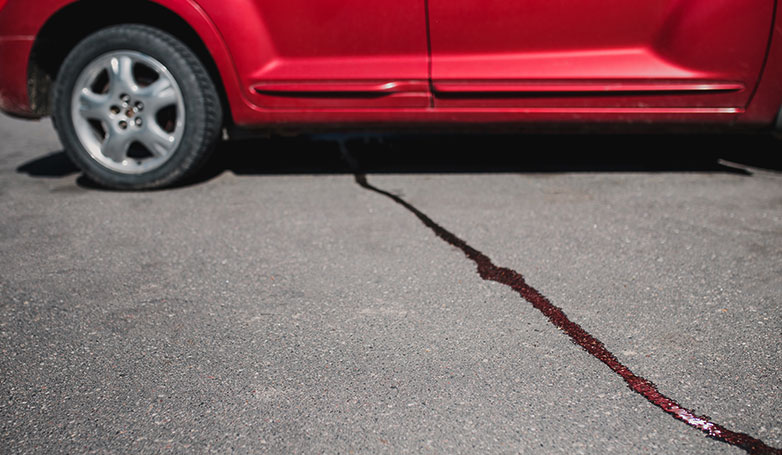
Immediate action to remove oil, grease, and other stains helps to preserve the parking lot’s appearance and prevent the stains from becoming permanent. Regular cleaning of these blemishes not only enhances the lot’s aesthetic but also protects the surface from potential chemical damage.
Sealcoating application
Applying a sealcoat every few years protects the parking lot from the elements, including water penetration, UV rays, and chemical spills. This preventive measure significantly extends the life of the parking lot, maintains its appearance, and saves money on long-term maintenance costs.
Effective drainage
Ensuring proper drainage within the parking lot is essential to avoid standing water, which can lead to surface damage and create hazards for users. Regular inspection and cleaning of drainage systems prevent water accumulation, protecting the lot from water-related damage and erosion.
FAQs about parking lot cleaning
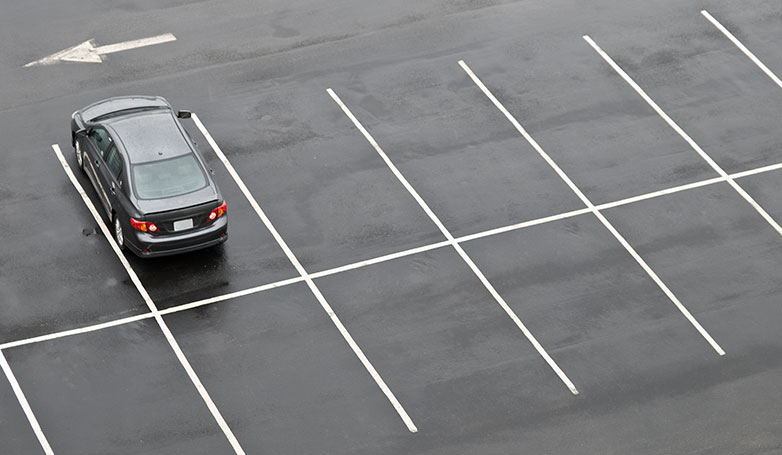
For those managing parking lots, ensuring they stay clean and maintained is a top priority. Here’s how to address common concerns effectively:
How do you clean an asphalt parking lot?
Start by removing all debris and vegetation. Sweeping is crucial for loose material, followed by addressing any stains with a degreaser. Power washing can help with deeper cleans. Finally, fill any cracks to prevent further damage.
How do you clean a concrete parking lot?
Similar to asphalt, begin with debris removal. Use a power washer for surface cleaning and a concrete-safe cleaner for stains. Seal any cracks to protect against water infiltration and prolong the lot’s lifespan.
Conclusion
In conclusion, maintaining a clean parking lot is crucial for safety, aesthetics, and longevity. Regularly sweeping, promptly repairing cracks and potholes, removing stains, applying sealcoat, and ensuring effective drainage are key steps. These practices not only enhance the appearance and usability of parking areas but also prevent costly repairs in the long run. Adopting a comprehensive maintenance strategy ensures a welcoming and safe environment for all users, reflecting positively on the property’s management.

